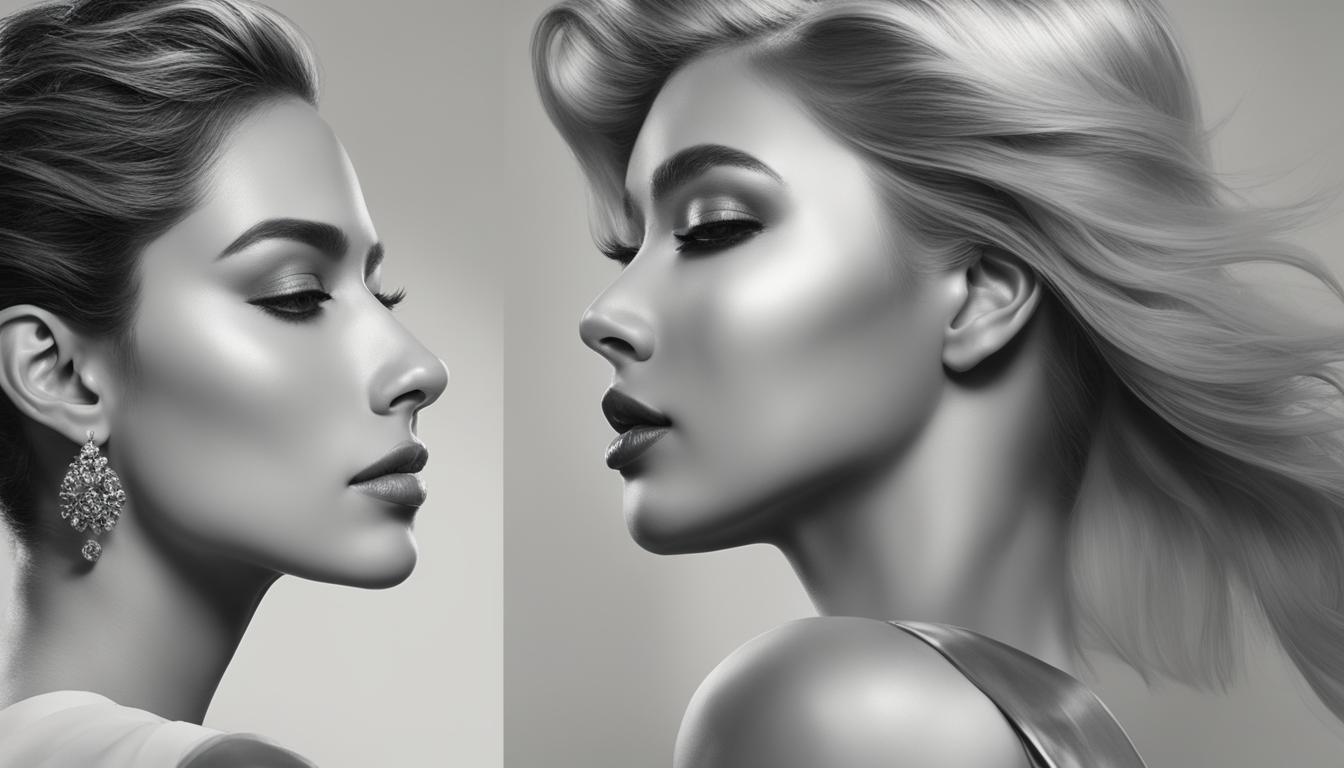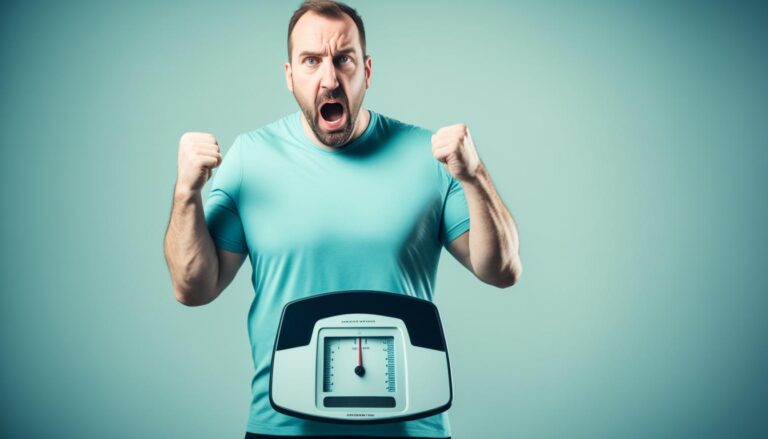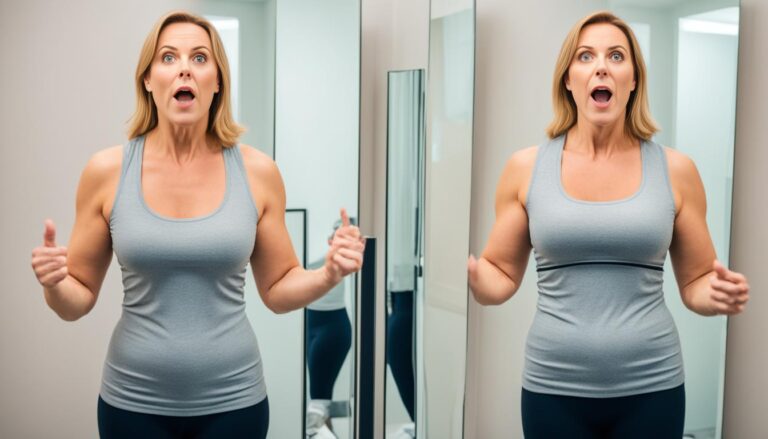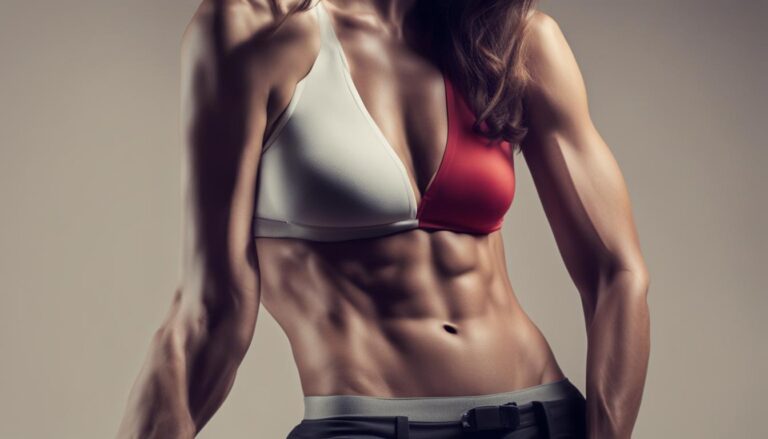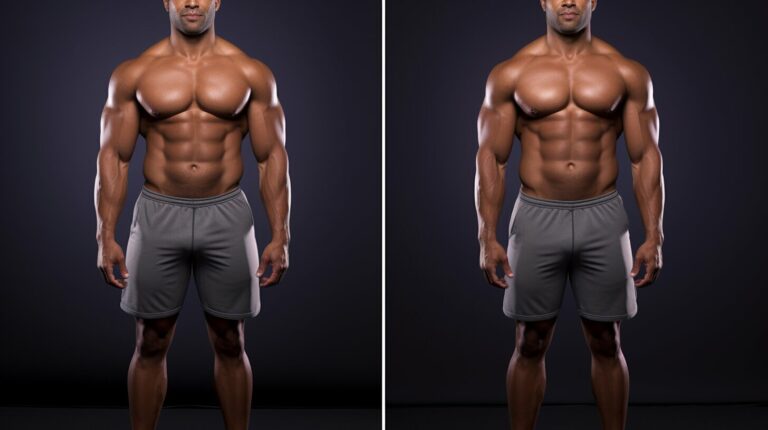Is Being Skinny More Attractive?
When it comes to physical appearance and attractiveness, there are various factors at play. One common belief is that being skinny is more attractive. However, recent research from the University of Toronto suggests that significant weight loss is required for others to perceive someone as more attractive.
The study found that women need to lose about twice as much weight as men to be considered more attractive. This is because the perception of facial adiposity, or weight in the face, is closely linked to body mass index (BMI). Increased facial adiposity is associated with a compromised immune system and poor cardiovascular function. Therefore, even a small decrease in weight can improve both health and attractiveness.
But what is the relationship between weight and facial adiposity? The University of Toronto study digitally altered photos of male and female faces with varying weights. Participants were asked to compare the pairs of faces and choose the one that appeared heavier. The results showed that a change in BMI of approximately 1.33 kg/m2 is required for a noticeable difference in facial adiposity. Interestingly, the study also revealed that women’s facial attractiveness is more sensitive to changes in weight compared to men.
Key Takeaways:
- Significant weight loss is required for others to perceive someone as more attractive.
- Women need to lose about twice as much weight as men to be considered more attractive.
- The perception of facial adiposity is closely linked to body mass index (BMI).
- A change in BMI of approximately 1.33 kg/m2 is required for a noticeable difference in facial adiposity.
- Women’s facial attractiveness is more sensitive to changes in weight compared to men.
The Relationship Between Weight and Facial Adiposity
The study conducted at the University of Toronto delved into the intriguing relationship between weight and facial adiposity to uncover the factors that influence attractiveness. Utilizing advanced digital alteration techniques, researchers manipulated photos of male and female faces, creating sequences of images with varying weights. Through comparative analysis, participants were tasked with choosing the face that appeared heavier.
The findings of the study unveiled fascinating insights into the impact of weight loss on facial adiposity and attractiveness. Researchers discovered that a change in Body Mass Index (BMI) of approximately 1.33 kg/m2 is required for a noticeable difference in facial adiposity. The study further revealed that women’s facial attractiveness is more sensitive to changes in weight compared to men, underscoring the importance of weight management for enhanced attractiveness.
This remarkable image visually represents the concept of facial adiposity and its significance in relation to weight. It serves as a visual reminder of the impact weight has on our appearance, especially in the face, and provides a compelling visual reinforcement of the study’s findings.
As we navigate the intricate terrain of attractiveness and weight, it becomes evident that facial adiposity plays a critical role in shaping perceptions of beauty. Understanding the correlation between weight loss, facial adiposity, and attractiveness can empower individuals to make informed decisions regarding their health and well-being, ultimately leading to a greater sense of self-confidence and fulfillment.
Key Findings:
- A change in BMI of approximately 1.33 kg/m2 is required for a noticeable difference in facial adiposity.
- Women’s facial attractiveness is more sensitive to changes in weight compared to men.
The Perception of Attractiveness in Women’s Bodies
A study conducted at Macquarie University found that both men and women consider an unhealthily low body fat content as most attractive in women. The research used computer graphics to manipulate the apparent fat and muscle mass of real body photographs. Participants were asked to indicate the shape they thought looked the healthiest or most attractive. The study revealed that participants chose significantly less fat mass to optimize the attractiveness of women’s bodies compared to optimizing their healthy appearance. This suggests that societal beauty standards may play a role in shaping perceptions of attractiveness.
Societal beauty standards have a profound impact on how we perceive attractiveness in women’s bodies. The study conducted at Macquarie University highlights the preference for low body fat content, indicating a cultural emphasis on slimness as a desirable trait. However, it is important to note that equating low body fat with attractiveness can have negative implications for women’s body image and self-esteem.
“The study’s findings shed light on the influence of societal beauty standards on the perception of attractiveness. By valuing low body fat content as most attractive, we perpetuate unrealistic and potentially harmful beauty ideals,” says Dr. Emma Thompson, one of the lead researchers involved in the study.
These findings raise important questions about the societal pressure to conform to specific body standards and the impact it has on women’s well-being. It is crucial to challenge narrow beauty standards and promote body positivity, accepting and celebrating diverse body shapes and sizes.
The Impact of Societal Beauty Standards
- Societal beauty standards perpetuate unrealistic body ideals
- Preference for low body fat content can lead to body dissatisfaction
- Women may experience pressure to conform to narrow beauty standards
- Body image issues can negatively impact mental health and self-esteem
These findings highlight the need for a more inclusive and diverse representation of beauty in media and society. Embracing body positivity and promoting self-acceptance can help individuals develop a healthier relationship with their bodies and foster a more inclusive understanding of attractiveness.
The Different Meanings of Thinness
The perception of thinness can vary greatly depending on individual perspectives. Some people find beauty in thinness, appreciating the physical aesthetics and straight lines associated with it. However, it is important to note that thinness itself does not possess inherent aesthetic qualities. The perception of beauty in thinness may stem from feelings of poignancy, fragility, or physical symmetry. It is crucial to recognize that beauty is subjective and influenced by cultural ideals and personal preferences.
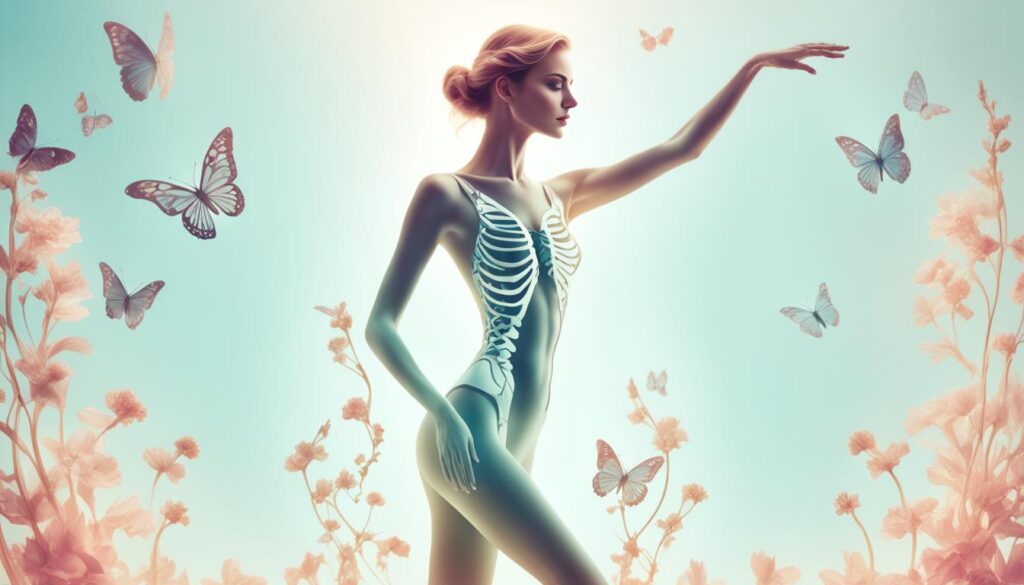
Beauty is often associated with societal standards, but it is important to remember that these standards can be subjective and ever-changing. While some may perceive thinness as beautiful, others may find beauty in different body types or attributes.
“Beauty lies in the eyes of the beholder.”
This quote emphasizes the subjectivity of beauty and highlights that everyone has their own unique perception of what is beautiful. What one person finds attractive, another may not. It is essential to embrace diversity and refrain from placing rigid beauty standards on oneself and others.
When discussing body image and attractiveness, it is crucial to promote self-acceptance and foster a positive body image for everyone. Society’s perception of beauty should not dictate an individual’s sense of self-worth.
Individual Perspectives on Thinness
Individual perspectives play a significant role in the perception of thinness. Cultural ideals and personal experiences shape how we view beauty. For some, thinness may be associated with discipline, determination, or fitness. Others may appreciate the aesthetics of a slender physique. However, it is important to remember that physical appearance alone does not define a person’s value or worth.
The Danger of Idealizing Thinness
While some individuals may find beauty in thinness, it is essential to acknowledge the harm that can come from idolizing a specific body type. The pursuit of thinness can lead to unhealthy behaviors and negative body image issues. It is crucial to promote a diverse range of body types and celebrate beauty in all its forms.
Ultimately, beauty is a complex and multifaceted concept that extends far beyond body weight or size. It is essential to embrace diverse perspectives and challenge societal beauty standards to foster a healthy and inclusive perception of beauty.
Factors Influencing the Perception of Thinness
The perception of thinness and attractiveness is influenced by various factors. Societal beauty standards and cultural ideals play a significant role in shaping perceptions of beauty. These standards often emphasize a thin body as the ideal and desirable. Body image and personal preferences also contribute to the perception of attractiveness. It is essential to recognize that beauty is a complex concept influenced by a combination of individual, cultural, and societal factors.
When it comes to societal factors, the media and fashion industry play a significant role in portraying thinness as the standard of beauty. Through advertisements, movies, and magazines, we are bombarded with images of thin models and celebrities, reinforcing the idea that thinness equals attractiveness. This constant exposure to societal beauty standards can influence our own perception of what is considered beautiful.
Body image, or how we perceive and feel about our own bodies, also plays a crucial role in shaping our perception of thinness. Individuals who have a negative body image may strive for thinness in an attempt to meet societal expectations and standards of beauty. On the other hand, those with a positive body image may embrace their natural body size and reject narrow beauty ideals.
“Societal beauty standards often emphasize a thin body as the ideal and desirable.”
Furthermore, cultural ideals of beauty vary across different societies and can heavily influence the perception of thinness. In some cultures, a curvier body type is considered more attractive, while in others, a thin body is idealized. These cultural differences highlight the subjective nature of beauty and how it is shaped by cultural values and norms.
Individual preferences also shape the perception of attractiveness. While societal beauty standards may promote thinness, personal preferences can vary greatly. Some individuals may find beauty in diverse body shapes and sizes, appreciating characteristics such as curves, muscle tone, or a more athletic physique.
It is important to acknowledge that beauty is not solely determined by body weight or size. Attractiveness encompasses a wide range of physical, emotional, and personal attributes. Embracing diversity in beauty ideals and promoting body positivity can help challenge narrow standards of attractiveness and foster a more inclusive and accepting society.
Cultural Influence on Beauty Ideals
| Culture | Body Ideal |
|---|---|
| Western | Thin body |
| African | Curvier body |
| Asian | Slender body |
| South American | Hourglass figure |
Note: This table provides a general overview of cultural beauty ideals and should not be seen as an absolute representation.
Beauty, Perception, and Individual Preferences
Beauty standards are not fixed, but rather vary across cultures and individuals. The concept of beauty itself is subjective, and what one person finds attractive may differ from another.
The rise of body positivity has challenged traditional beauty standards and encouraged the acceptance of diverse body shapes and sizes. In a world that celebrates body positivity, there is a growing realization that beauty comes in all forms.
Individual preferences and personal experiences also play a significant role in determining what is considered attractive. What matters most is how you perceive your own beauty and embrace your unique qualities.
It is important to promote body positivity and embrace diversity in beauty ideals. By celebrating individuality and recognizing the beauty in all body types, we can create a more inclusive and accepting society. Let’s move away from rigid beauty standards and appreciate the beauty that lies in our differences.
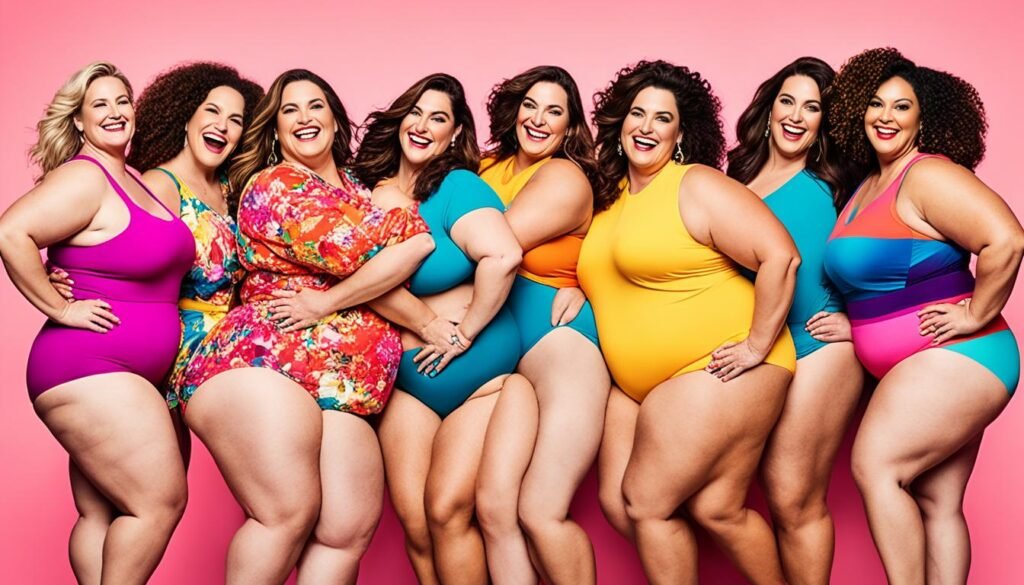
The Complex Relationship Between Weight and Attractiveness
The relationship between weight and attractiveness is multifaceted and influenced by various factors. While societal beauty standards often emphasize thinness as attractive, individual preferences and cultural ideals also play a significant role in shaping perceptions of beauty.
It is crucial to recognize that attractiveness is not solely determined by weight alone. Physical appearance, confidence, and personal attributes all contribute to one’s overall appeal. While being thin may be considered attractive in certain cultural contexts, it is important to acknowledge that beauty is subjective and can differ from person to person.
“Beauty is not in the face; beauty is a light in the heart.” – Kahlil Gibran
Embracing diversity and promoting positive body image are key in challenging narrow beauty standards. By celebrating different body shapes, sizes, and individual beauty, we can foster a more inclusive and accepting society.
The Influence of Cultural Ideals
Cultural ideals of beauty significantly impact the way we perceive attractiveness. These ideals vary across different cultures and can change over time. For example, in certain cultures, curvier and more voluptuous body types are considered desirable, while others prioritize a thinner physique.
Societal beauty standards often perpetuate the notion that thinness equates to beauty. Media, advertising, and popular culture frequently showcase thin individuals as the epitome of attractiveness. This portrayal can create unrealistic expectations and contribute to negative body image issues.
Perception and Personal Preferences
Perception of attractiveness is highly subjective and influenced by personal preferences. What one person may find attractive, another may not. Factors such as cultural upbringing, personal experiences, and individual values all shape an individual’s perception of beauty.
It is essential to recognize and respect the diversity of personal preferences when it comes to attractiveness. By understanding that beauty is fluid and unique to each individual, we can foster a more inclusive and tolerant society.
The Role of Healthy Body Weight
While thinness is often associated with societal beauty standards, it is important to prioritize health over arbitrary standards of attractiveness. Body weight alone does not determine one’s overall well-being or beauty.
Instead of focusing solely on weight, emphasis should be placed on maintaining a healthy lifestyle, which includes a balanced diet, regular exercise, and holistic well-being. By promoting a positive body image and embracing diverse beauty ideals, we can create a healthier and more inclusive perception of attractiveness.
| Factors Influencing Attractiveness and Weight | Effects on Perception |
|---|---|
| Societal Beauty Standards | Can lead to unrealistic expectations and negative body image |
| Cultural Ideals | Shape perception of attractiveness based on different body types |
| Personal Preferences | Vary from individual to individual, influenced by diverse factors |
| Health and Well-being | Importance of prioritizing overall health over arbitrary standards |
Conclusion
The perception of attractiveness and body weight is heavily influenced by societal beauty standards and individual preferences. Research has shown that significant weight loss is often required for others to consider someone more attractive, particularly for women. However, it is essential to recognize that beauty is a subjective concept shaped by cultural ideals and personal preferences.
Embracing body positivity and celebrating diverse beauty ideals is crucial in challenging narrow standards of attractiveness. While societal norms may promote thinness as the ideal, it is important to remember that attractiveness encompasses a wide range of factors beyond weight. Physical appearance, confidence, and personal attributes all contribute to one’s attractiveness.
By promoting body positivity, we can shift the focus from societal beauty standards to a more inclusive perception of beauty. Everyone deserves to feel accepted and valued, regardless of their body size or shape. Embracing diversity and rejecting narrow beauty standards help create a more accepting and inclusive society, fostering self-love and cultivating a healthier perception of beauty.
FAQ
Is being skinny more attractive?
While certain beauty standards promote thinness as attractive, beauty is subjective and influenced by various factors including cultural ideals and personal preferences.
What is the relationship between weight and facial adiposity?
Research has shown that significant weight loss is required for noticeable changes in facial adiposity. Women often need to lose twice as much weight as men to be considered more attractive.
How does body fat content affect perceived attractiveness?
Societal beauty standards often promote unhealthily low body fat content as most attractive in women. However, perceptions of attractiveness are subjective and influenced by personal preferences and cultural ideals.
What are the different meanings of thinness?
Thinness is often associated with physical aesthetics, poignancy, fragility, or physical symmetry. However, the perception of beauty in thinness is subjective and varies among individuals.
What factors influence the perception of thinness?
The perception of thinness is influenced by societal beauty standards, cultural ideals of beauty, and personal body image and preferences.
How do beauty, perception, and individual preferences interact?
Beauty is a complex concept influenced by a combination of physical appearance, confidence, personal attributes, and individual preferences. The rise of body positivity has challenged traditional beauty standards and encouraged acceptance of diverse beauty ideals.
What is the complex relationship between weight and attractiveness?
Attractiveness is subject to societal beauty standards and individual preferences. Research has shown that weight loss is required for others to perceive someone as more attractive, particularly for women. However, beauty standards and perceptions of attractiveness are not solely determined by weight but encompass a wide range of factors.
How are societal beauty standards and the perception of beauty related?
Societal beauty standards often emphasize a thin body as the ideal and desirable. However, beauty is subjective and influenced by individual, cultural, and societal factors. It is important to promote body positivity and embrace diverse beauty ideals.
